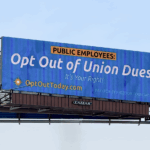Most of us in the private sector seemingly have little reason to pay attention to government pension troubles. After all, we have our own retirement plans to worry about.
But here’s the problem. Pensions are financial promises that—short of bankruptcy—must be kept no matter how bad things get economically or how many games are played with the money in the meantime.
Over the years, Washington legislators have skipped required pension payments, adopted unrealistic rates of return, invested large amounts in risky private equity and enacted foolish policies like gainsharing and other costly benefit increases.
Arguably, pensions are at greater risk from poor political decisions than economic events. A Jan. 19 presentation to the House Appropriations committee shows just how dire things are about to get for pensions.
By 2018, the state will be making more than $1 billion a year in pension payments. About 40 percent of that is to pay down unfunded liabilities. That nearly doubles current pension payments.

Our state-level pension problem isn’t the extent of it. School districts and local governments are going to get pummeled—in some cases with 50 percent increases in employer contribution rates.
Part of the reason rate increases are happening is because legislators are (partially) following actuarial recommendations to lower the expected rate of return for pension investments and adopt longer life expectancy assumptions.
These changes have the immediate effect of requiring higher payments but will help make the pension system healthier over the long run. Frankly, they are overdue.
Pension reforms need to consider options that are more transparent and less susceptible to legislators’ tendencies to overpromise and underfund. Most Americans have defined-contribution retirement plans (the employee or individual owns the plan).
Properly designed, there is no reason state employees can’t, as well. The Freedom Foundation has long recommended a change in pension policy, starting with closing all defined-benefit plans to new employees.
Defined-benefit pensions are a relic left over from an era when life expectancies were low (around 60 years when the state’s first pension plans were enacted) and most people worked until they were physically unable. Governments expected to pay out benefits for a relatively small number of years.
Today, retirees may live for 25, 30 or even 40 years after they stop working. Putting taxpayers on the hook for those kinds of benefits is neither practical nor fair.
None of us know what the future holds. Most of us cannot decisively secure or guarantee our own retirement benefits—how can we be expected to ensure those of others?
Among the biggest obstacles to pension reform are—you guessed it—unions. They are the primary impediment, even for modest pension reforms.
There is no doubt that billion-dollar-a-year pension payments are going to squeeze the state budget. Patchwork fixes may help, but they will ultimately not correct a hemorrhaging pension system.
We need total and decisive pension reform, or await higher taxes and reduced public services to pay for them.












